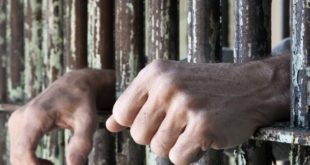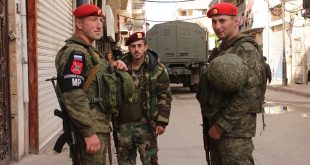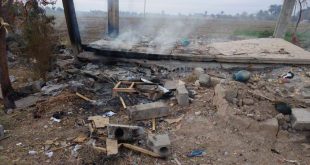NAHER MEDIA
Introduction
Since Iran entered Syria militarily, it has focused its attention on the easternmost region, Deir Ezzor, that marginalised .province since Assad the father until his son’s reign
Iran had been making preparations and preparing its militias to capture Deir Ezzor, which happened in the last quarter of 2017 when it entered the southern bank of Deir Ezzor province, or what has been named later (the western Euphrates), with help from the Russians and Assad forces following an air campaign by Russian fighter jets. This led to an abrupt and smooth withdrawal of Daesh and the arrival of Assad forces and Iranian militias after more than four years since it was no longer under the control of Assad.
Iran’s interest in Deir Ezzor, which was neglected by the governments of Assad the father and his son, did not come out of nowhere: it proved subsequently that its ambitions go beyond the distinguished geographical location, which forms a link between the Levant and Mesopotamia, to the economic ambitions to take Deir Ezzor’s natural resources, as well as the political significance, which made Deir Ezzor the balance point in the Syrian situation after it was divided between the two main international actors, the US and Russia.
Since Iran entered Deir Ezzor, it has focused its attention the most on the major cities of the province, particularly the bordering al-Bukamal, to which it attached great importance since the very early days through the presence of the former commander of al-Quds Force in the Iranian Revolutionary Guard Corps (IRGC), Qasem Soleimani, in al-Bukamal, taking control of it and keeping it outside the control of the regime and the Russians.
As Iran consolidated its influence in al-Bukamal and secured the land borders with Iraq, it started forming local militias from residents of the region and attracting Arab and foreign Shiite members and militias, exploiting the land route connecting Syria and Iraq through al-Bukamal.
The increasing number of Iranian militias and their numerous names have made us count all the active and inactive ones in Deir Ezzor whilst endeavouring to cover the structure and affiliation of each militia.
In this investigation, we look at the Iranian militias operating in Deir Ezzor, the foreign ones coming from beyond the border and the domestic ones formed by Iran after extending its influence over the western Euphrates areas in the province. The most important militias are:
The ‘IRGC’ militia:
It is an Iranian militia that reports directly to the IRGC, which was founded in Iran in the wake of the Khomeini Revolution, and it is the nucleus of the local militias created by Iran in Deir Ezzor province as all local militias are affiliated with it administratively, militarily and financially.
The militia in Deir Ezzor city and the eastern region is headed by ‘Haj Mahdi’, an Iranian military commander, whereas it is commanded by ‘Haj Hussein’ in al-Mayadeen city and its countryside and ‘Haj Askar’ in al-Bukamal and its surroundings.
The number of the IRGC militia members in Deir Ezzor, whose core comprises local militias, is approximately 12000, deployed across the regime-held areas of Deir Ezzor – its main core is stationed in al-Mayadeen city, east of Deir Ezzor, where nearly 3000 IRGC members are stationed in the city, its badia and its countryside.
The biggest headquarters of the IRGC militia in the eastern region is near al-Assad Hospital, south of Deir Ezzor city, which houses over 400 members, all of whom are Syrian (from various Syrian provinces) and are supervised by Syrian officers.
This headquarters is the biggest one for providing personnel for the IRGC militia and from which reinforcements are sent to the areas of: al-Raqqa city, Palmyra as well as Deir Ezzor eastern and western countryside.
Regarding al-Mayadeen city, the militia’s headquarters are in al-Tammo neighbourhood and some homes in al-Sina’a neighbourhood, in addition to military headquarters in al-Mazare’ area south of al-Mayadeen city. The militia’s outposts are set up in ‘Ain Ali’ shrine, east of al-Mayadeen city and in al-badia depths, namely ‘al-Khour’ area.
The missions of the IRGC militia vary: they are divided into infantry occupying the outposts in Deir Ezzor badia, guards tasked with guarding the headquarters and depots of this militia, members for organising (villages and parties), secret intelligence members and members reporting to the Iranian Cultural centre.
The salaries of the members are different: fighting members at fronts receive the highest incomes as each member is paid between 85 – 125 thousand SP. The salary of a member guarding headquarters is 65 thousand SP and the Cultural Centre members receive about 75 thousand SP. After the settlement was reached between the militia and regime forces, its members have been receiving payments from both the IRGC militia and regime forces.
Local militias
1- ‘Haras al-Qura’ militia:
The Haras al-Qura militia reports to the IRGC militia commanded by ‘Haj Hussein, and it has two military commanders, who are Iranian: ‘Haj Salman’ and Haj Abad’.
This militia has around 1500 members in the area between al-Buleil town and Sbeikhan city, in rural eastern Deir Ezzor, and the majority of its members are (Syrian) locals.
The Haras al-Qura militia outposts are deployed from al-Buleil town to Sbeikhan city and their main mission involves being stationed along the river in the area opposite SDF territory on the other bank of the Euphrates River. It is also in charge of guarding religious sites in rural, eastern Deir Ezzor as it has several posts in ‘Ain Ali’ site in the badia of Al Quriyah city, east of al-Mayadeen.
The salaries of the Haras al-Qura militia range between 65 thousand and 100 thousand SP as normal members and party organisers receive 65 thousand SP whereas specialist members are paid nearly 100 thousand SP: specialist members specialise in a particular military field (artillery, heavy machine guns) whereas each IT member receives 75 thousand SP.
2- ‘Abu al-Fadl al-Abbas regiment’ militia:
The ‘Abu al-Fadl al-Abbas regiment’ militia reports to the People’s Army, which is affiliated with the regime, in a sectarian manner and it receives its military and administrative orders from al-Sayyida Zainab area in Damascus. The general commander of the militia is ‘Adnan Abbas al-Su’ood’, Abu Al-Abbas, from al-Mayadeen city, an IT engineer who left al-Mayadeen area after the regime lost control of it in 2012 and he settled in Damascus. He returned with the regime forces after that area returned to the regime in late 2017.
The ‘Abu al-Fadl al-Abbas’ is one of the biggest military, sectarian factions in the region, totalling 4000 members. Some of its members are (Syrian) locals whilst others are Afghanis and Iranians overseeing arms depots and detention centres in al-Rahba archaeological castle, south of al-Mayadeen city, east of Deir Ezzor.
Due to the big number of its members, ‘Abu al-Fadl al-Abbas’ militia is deployed in myriads of outposts: they have outposts in the perimeter of al-Rahba archaeological castle, in the feedlots of al-Mayadeen city near the regime artillery, south of al-Mayadeen city, in the vicinity of ‘Ain Ali’ site in the badia of Al Quriyah city, east of Deir Ezzor, in the depths of al-badia in the graveyards of al-Ashara city, and al-Akoola area. They are also deployed in guard posts on the Euphrates named (Badr 11, Badr 12 post, Badr 13 post, Badr 14 post), as well as in petrol stations in al-Qimma Station in Mahkan area, Al-Zeeb Station in al-Teeba area and al-Qal’a area in al-Bal’oom neighbourhood in al-Mayadeen city.
The militia has several tasks: they have guard posts in al-Badia and are tasked with the mission of countering any Daesh assault targeting the region. It has heavy weapons, arms depots and missiles in the tunnels inside al-Rahba archaeological castle, is primarily responsible for guarding ‘Ain Ali’ shrine and is the main defence line for the shrine.
The salaries of ‘Abu al-Fadl al-Abbas’ militia members are 75 thousand SP and each member who undertook the settlement with the regime forces receives 28 thousand SP from them if they have not finished their military service and 86 thousand SP if they finished their military service in the regime.
3- ‘Al-Sayyida Zainab regiment’:
The al-Sayyida Zainab regiment militia reports to al-Sayyida Zainab area in Damascus, where its command is located, which is supporting it militarily and monetarily. Its general commander is called ‘Abu Zainab’, from al-Sayyida Zainab area in Damascus. Its military and general commander in al-Mayadeen area is ‘Mu’ayyad al-Dhweihi’, who has been nicknamed afterwards ‘Haj Jawad’ after obtaining the Iranian citizenship – he hails from al-Mayadeen city and his brother, ‘Abdulsamad al-Dhweihi, assists him in managing the militia.
The al-Sayyida Zainab regiment militia members are around 750: 600 locals and 150 foreigners from Iran, Afghanistan and Pakistan. The majority of its members have undertaken religious courses in al-Sayyida Zainab area in Damascus and the militia aims at making its members the best ones in the region.
The ‘al-Sayyida Zainab regiment’ militia is deployed in relatively few posts in the region and it has only one outpost on the Euphrates River, in al-Mayadeen city and one outpost in the water station of Mahkan town, east of al-Mayadeen city. Its general headquarters is situated near the home of its commander, ‘Mu’ayyad al-Dhweihi’, near al-Hamad Private Hospital in al-Mayadeen city.
The al-Sayyida Zainab regiment militia members are only responsible for guarding its headquarters in al-Mayadeen city and within the former gate that was in Mahkan water station, east of al-Mayadeen city. It has a roadblock behind the pedestrian bridge in Mahkan town, posts near ‘Ain Ali’ site called Ali posts 12, as well as a coordination unit with the regime’s People’s Army.
The al-Sayyida Zainab regiment militia members receive salaries just like the other military formations in the region: each member is paid 65 thousand SP per month whereas the members enjoying privileges from the militia commander have higher salaries than the average member and are called ‘security members’: they are special guards for the militia commander and receive up to 125 thousand SP per month.


4- Usood al-Asha’er Corps militia:
It is a militia formed by ‘Nawwaf al-Basheer’, the al-Bakkara tribe chief, in late 2017. It reports directly to the IRGC and shares guard posts with the Baqer militia in al-Badia near al-Mayadeen and al-Bukamal cities. The number of fighters in both militias is nearly 5000 from the residents of the villages and towns of Hatla, Mrat, al-Tabyiah and al-Husseiniyah, north of Deir Ezzor – Mrat town, north of Deir Ezzor, is a post for switching the shifts of their guarding members. Each member receives about 125 thousand SP from Haj Qahtan, an IRGC commander; some of the most prominent local commanders inside the militia are:
– Abdallah al-Sattam
– Kroom al-Zuhdi
– Khalaf Yunus al-Sattam
– Abu Ali al-Tabyiah
– Fawwaz al-Rasheed
– Abu Sayyaf Mrat
– Nasr Awwad al-Sa’doon
5- ‘Liwa al-Sheikh’ militia:
The ‘Liwa al-Sheikh’ militia is directly affiliated with the IRGC in al-Mayadeen city i.e. ‘Haj Hussein’ who is on good terms with the militia commander, ‘Akram al-Sheikh’, known as ‘al-Sheikh’. The ‘Liwa al-Sheikh’ militia is clannish in nature and is among those recently formed as it was created at the beginning of 2021 with the aim of mobilising an Iran-backed clannish force in the region. The number of its members is approximately 150, who are relatives of the militia commander.
The ‘Liwa al-Sheikh’ militia has no outposts; rather, it has recently appropriated properties owned by anti-Assad civilians in al-Mayadeen area and some shops in order to invest them for the benefit of the militia. The militia is tasked with attracting young men at the pretext of creating a clannish force and is one of the most treacherous ones on account of their attempts to bring the clans in the region under Iran’s control.
The ‘Liwa al-Sheikh’ militia members receive salaries that are similar to the IRGC’s and are up to 65 thousand SP – they are not paid by the People’s Army, for they have not undertaken a settlement with it yet.
6- 47th Brigade:
It is a militia whose members are local, from Al-Mishahada Tribe. The militia is the most active militia in Al-Bukamal, and it is composed of 150 members and is directly affiliated with IRGC.
The militia’s bases, posts, and checkpoints are spread inside Al-Bukamal, and it has guard posts in Al-Bukamal Badiyeh, also it contains a group called Hashemiyoun forces, who are from Al-Mishahada Tribe located west of Al-Bukamal, and it led by Yusef Hamdan Al-Mishahadani, and another group called the rapid intervention forces.
These two groups are tasked with special missions in Badiyeh, and they conduct patrols at night in Al-Bukamal City.
The salaries of the 47th Brigade militia range from 75,000 SYP to 250,000 SYP, according to the specializations determined by the militia leadership.
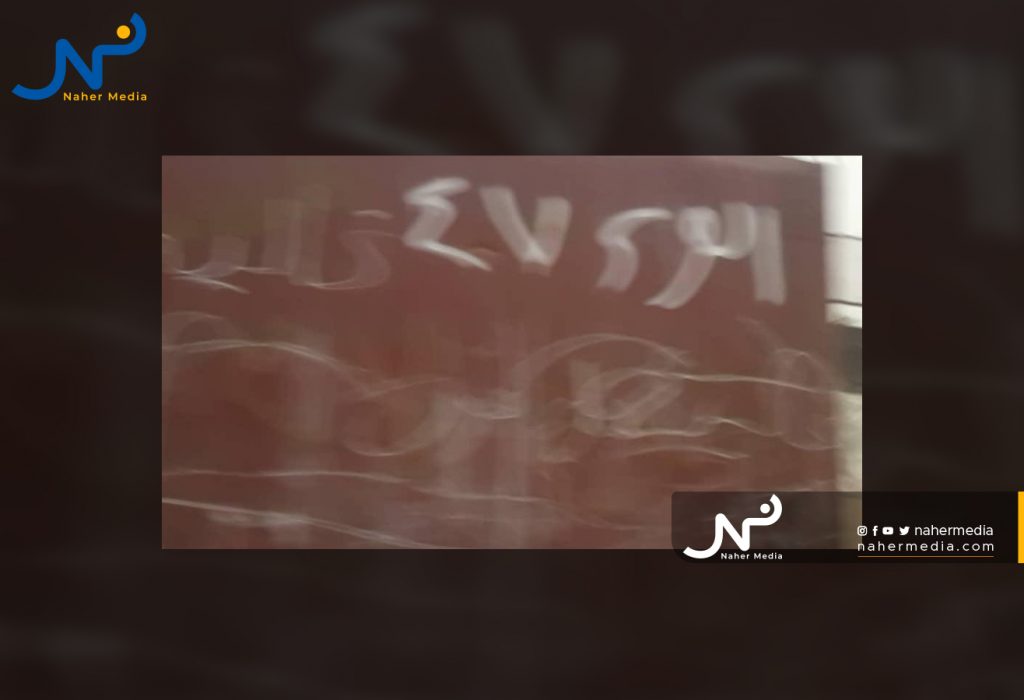
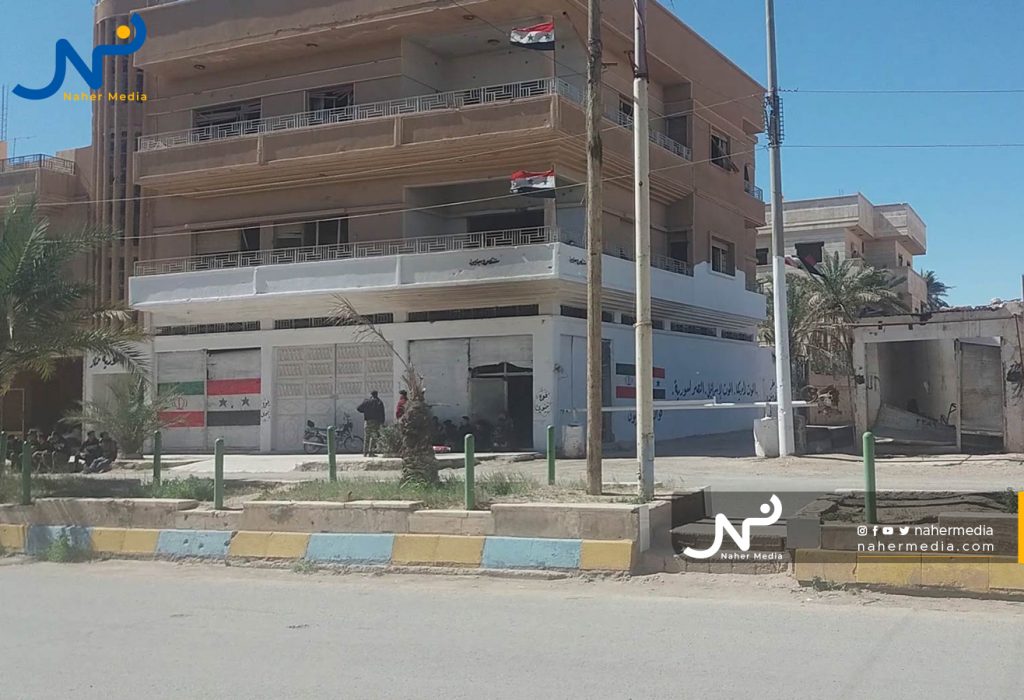

7- Liwa Al-Hussein
The militia contains about 100 members, led by Fayez Al-Jad’an, and another Iranian ammunition official called Maysam.
The militia’s main mission is to guard Iranian weapons and ammunition depots in Ayyash (عياش) west of Deir Ezzour. The salary of depot guards is 65,000 SYP.
8- Qamar Bani Hashim militia:
It contains about 400 local members from Deir Ezzour, Homs, and Hama, and it has about 20 posts in the western Al-Bukamal Badiyeh. Most of the local members from Deir Ezzour are from Hatlah (حطلة) and Marat (مراط), north of Deir Ezzour.
9- Osoud Al-Akidat:
It is a newly formed militia and contains 200 members, most of whom are from Al-Shuwait Tribe, led by Mahmoud Al-Shuwaiti, and affiliated with IRGC.
The militia’s main headquarters is located on Al-Arbaeen Street in Al-Mayadeen, and the militia is operating in Al-Mayadeen and its southern Badiyeh east of Deir Ezzour.
The salary of the militia members is 80,000 SYP.
Cross-border militias
1- Fatemiyoun Brigade:
Fatemiyoun Brigade is affiliated with Iran, and it has a direct coordination with the leadership of IRGC in the region. Fatemiyoun Brigade contains approximately 600 members, most of whom are Afghan. The militia has difficult conditions for enrolment, the main of which is that the person should not be wanted for the regime forces (whether because the compulsory service or other reasons). About 10% of the members are local Shiite members.
Fatemiyoun Brigade is clearly a sectarian militia, and it operates in complete secrecy, and it is one of the most dangerous militias in the region. The leader in Al-Mayadeen is an Iranian called Ali Reda, and the leader in Al-Bukamal is called Hajj Askar.
Fatemiyoun Brigade is deployed at posts in the security complex in Al-Mayadeen, and it also has posts in Al-Rahba (الرحبة) Castle and there is a secret prison for the militia. The militia has many posts in Al-Mayadeen Badiyeh to repel any attack by Daesh members, and it is stationed in the western Al-Bukamal countryside as well. Also, it is present in depots area in Ayyash (عياش) in the western Deir Ezzour countryside in SAA-controlled area.
The main task of the militia is to protect religious sites in Al-Mayadeen, and to protect the houses of Iranian and Iraqi visitors coming to visit the religious sites. The militia accompanies the processions of visitors, to protect them and guide them to visit the most prominent religious sites in the region.
The members of Fatemiyoun Brigade militia receive high salaries, compared to the other militias in Deir Ezzour, where they receive salaries ranging between 200 and 400 USD per month, and the salary of the local member is up to 200 USD.
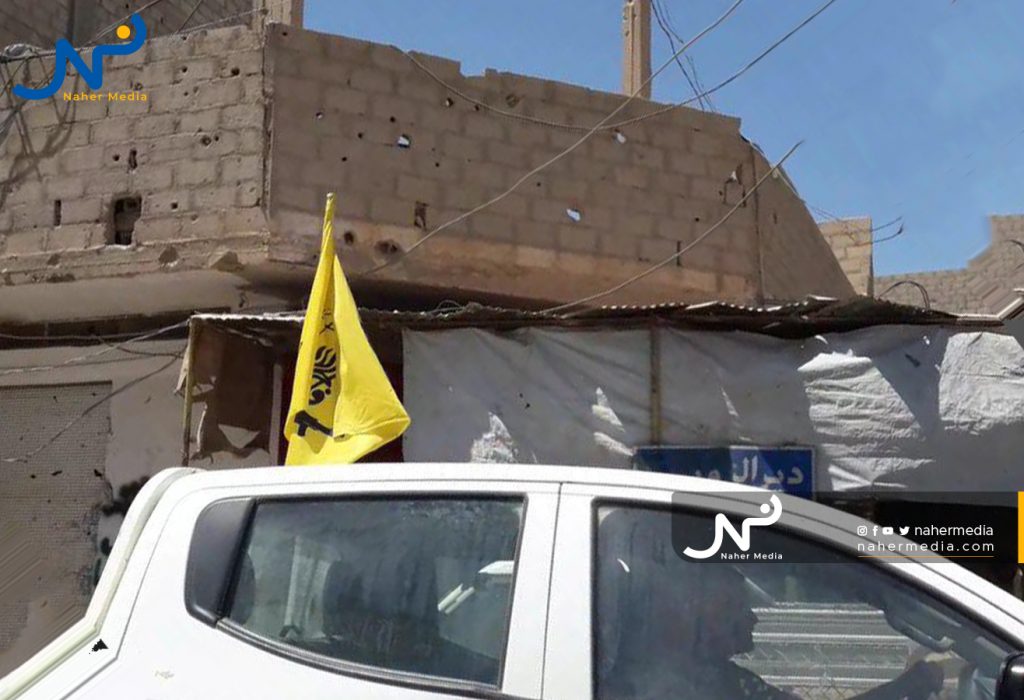
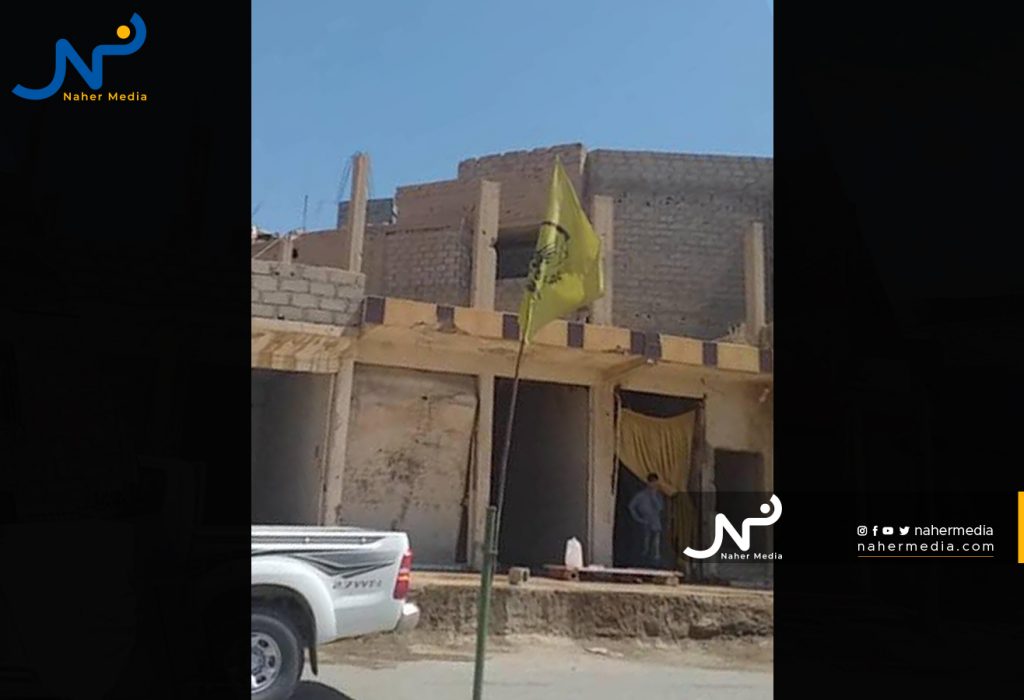
2- Zainabiyoun Brigade:
The militia contains 150 members, led by the Iranian Hajj Askar, and the majority of the members are Pakistanis.
The militia posts and bases are located in the western Al-Bukamal countryside, in the villages and towns of Al-Sukariyah (السكرية), Al-Sayyal (السيال), and Al-Huriya (الحرية).
Its main mission is to protect advanced posts in Badiyeh of Hamdan (الحمدان) and Al-Ghubra (الغبرة), and it has guard posts on the bank of the Euphrates River.
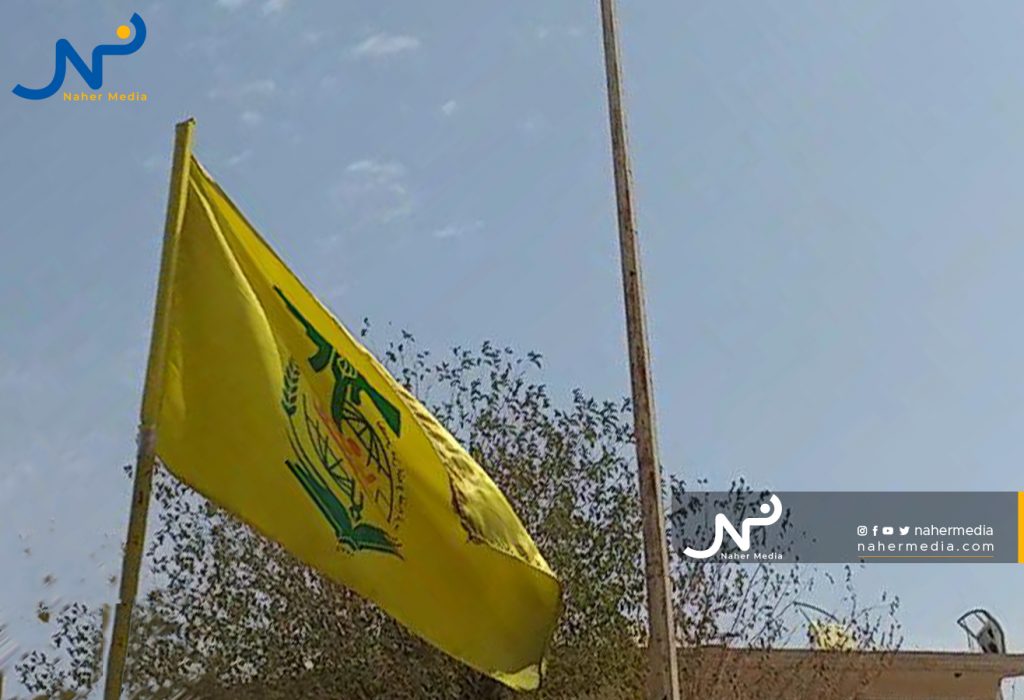
3- Lebanese Hezbollah militia:
The Lebanese Hezbollah militia posts are spread in the Green Belt area, south of Al-Bukamal, east of Deir Ezzour.
It is also largely present in the areas of Al-Shibli (الشبلي) and the shrine of Sheikh Anas (الشيخ أنس), southeast of Al-Mayadeen. The militia also has a headquarters called the Information and Espionage Branch in Al-Sina’a neighbourhood in Al-Mayadeen, to monitor all calls and messages done through the Syrian communication and Internet networks.
Mystery surrounds this militia in Deir Ezzour, as it does not interfere and deal with the people, and its members are Syrian and Lebanese.
4- Fatehallah militia:
It is a new militia that appeared in recent months in Deir Ezzour, and the name of the militia “Fatehallah” is written on the members’ uniform. Its members are foreigners, most of them Afghans, and are affiliated with IRGC.
5- Iranian Supreme Security militia:
It is a security agency, that resolves differences and disputes between militias affiliated with Iran and recruits local agents for the purpose of gathering information, and consists of Lebanese and Iraqi members, led by an unidentified Iranian leader.
About 15 members are deployed at the posts located at the river crossing between Saker Island (حويجة صكر) and Hatlah (حطلة), in Deir Ezzour city. Also, there is another group located at the border crossing, and there are bases in Al-Hari (الهري) and in the housing neighbourhood in Al-Bukamal, led by a person called Abu Hassan Al-Libnani. Its checkpoints are deployed at night near Al-Suwaiyia (السويعية) Bridge, for the purpose of checking and verifying the identities of those in the area.
PMF militia:
PMF militia was formed in Iraq in 2014 depending on a fatwa by the Religious Reference Ali Al-Sistani. When SAA and Iranian militias took control of the southern bank of Deir Ezzour in 2017, PMF directly intervened in Syria, through Al-Bukamal in Deir Ezzour.
The salaries of PMF militia range between 600 and 800 USD per month, according to the tasks. Their funding is secured through royalties, customs, and smuggling operations that take place at the border crossings.
PMF militia receives orders from IRGC, represented by the Iranian commander Hajj Mortada, an Iranian who supervises these militias in Al-Bukamal.
PMF includes several active factions in Deir Ezzour, namely:
1- Iraqi Hezbollah militia:
It contains about 125 members, all of them are Iraqis, led by Abu Sadiq, an Iraqi from Baghdad. Its posts are spread along the Syrian-Iraqi border in Al-Bukamal area, and the militia owns a military crossing run by a number of militia leaders along with Asa’ib Ahl Al-Haq militia. It is called Hussein Al-Ali Military Crossing in the border town of Al-Hari (الهري). The militia has no presence in the centre of Al-Bukamal and its western countryside. The militia is active in smuggling weapons, drugs, and livestock, in addition to imposing royalties on trucks entering and leaving Iraq.
2- Asa’ib Ahl Al-Haq:
It contains approximately 200 Iraqi members, led by Abu Ahmad aka Al-Theeb. Its posts are spread in the eastern Al-Bukamal countryside, especially in the towns of Al-Hari (الهري) and Al-Suwaiyia (السويعية). The militia is active in smuggling operations, especially drugs, from Syria to Iraq, in coordination with the Fourth Division of the regime, and recently it has had a role in managing the military crossing with the Iraqi Hezbollah.
3– Kata’ib Sayyid al-Shuhada’:
It contains 160 Iraqi members, led by the Iraqi Hajj Shamil Abu Ahmad. The militia has advanced posts in Al-Hari Badiyeh and on the Iraqi border, and there are reconnaissance posts at the Euphrates River.
4 – Popular Mobilization Security:
It contains about 50 members, led by the Iraqi security official of the militia who is called Al-Mukhtar, and the militia is a part of Kata’ib Sayyid al-Shuhada’.
The militia is considered one of the influential militias in the region and is primarily responsible for the security of the region and for interfering with the region’s problems, such as clashes or tribal disputes, in coordination with the Iranian Supreme Security.
5- Harakat al-Nujaba:
It contains 50 members, led by Abu Hassan, and they move in the Syrian-Iraqi Badiyeh, and the militia has a base on the Euphrates Riverbank in Al-Bukamal.
The militia is active in smuggling weapons from SDF areas to SAA areas from Deir Ezzour, in cooperation with local smugglers, and then to Iraq.
6 – Haidariyoun Brigade:
It contains 50 members led by the Iraqi Hajj Razzaq.
The members are deployed in the eastern Al-Bukamal countryside, and their main mission is to handle the public relations of the militias, such as media promotion and providing aid to the people.
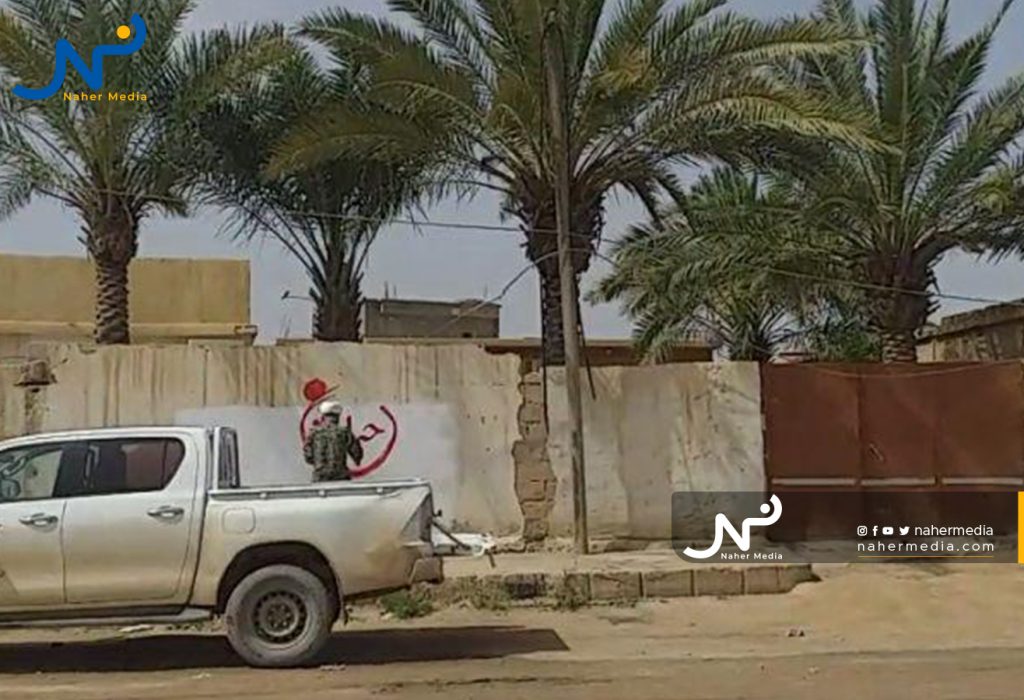
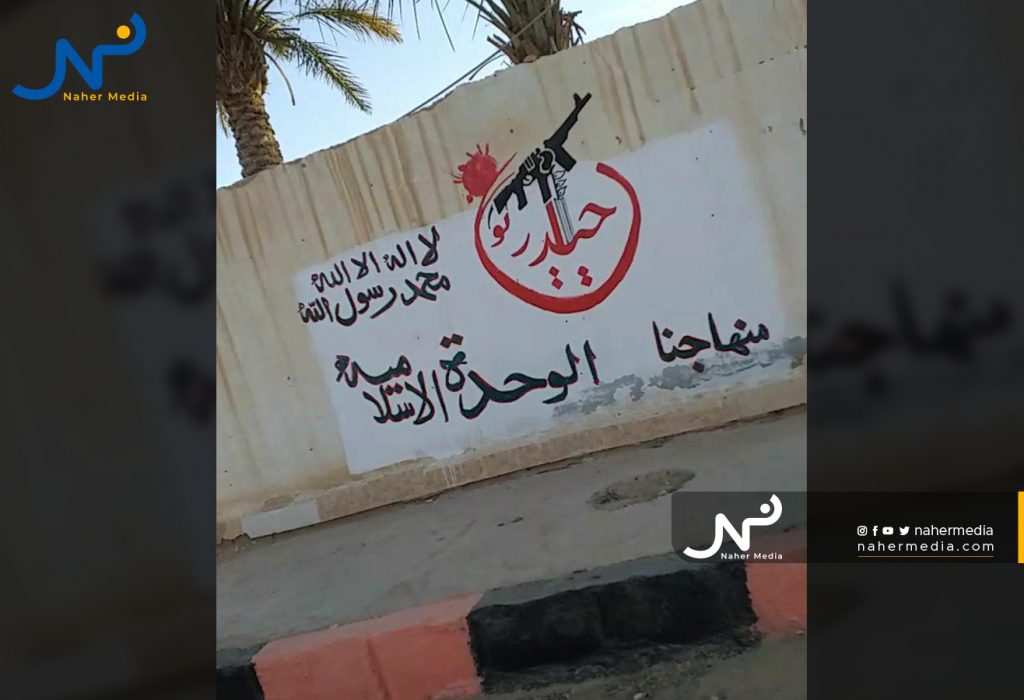
7- 27 Militia “Muhammad Rasul Allah”:
It is a militia affiliated with PMF, and deploy in the eastern Al-Bukamal countryside, adjacent to the Syrian-Iraqi border, and the militia’s posts are spread in the villages of Al-Suwaiyia and Al-Hari in the eastern Al-Bukamal countryside. New phrases were written by the militia on the walls in the main streets in both villages.
The militia participated with Iranian militia forces in the battle of controlling Al-Bukamal and its countryside at the end of 2017.
As for the name “Muhammad Rasul Allah”, it is the name of the military operation launched by PMF in April 2017 to regain control of Iraqi cities and towns from Daesh.
8- Al-Ibdal Islamic Resistance Movement:
It contains approximately 50 members, stationed in the town of Al-Hari, and most of the militia members work in trading and smuggling contraband between Syria and Iraq. The militia is led by the Iraqi Abu Ritaj. The militia moved towards Damascus at the beginning of this year and returned to Al-Hari about a month ago for unknown reasons.
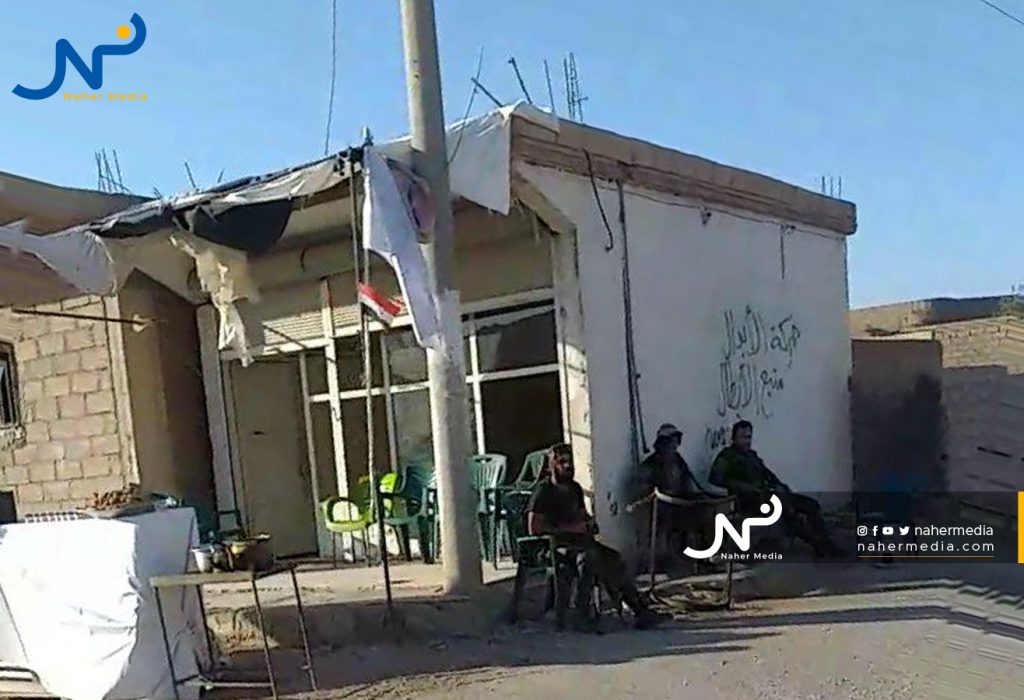
CONCLUSION
Given the large number of militias affiliated with Iran in Deir Ezzour, which are 22, 9 of which are local militias, and 13 others are cross-border, we found out after investigation that the majority of Iranian militias operating in Deir Ezzour are only tools, or branches to IRGC.
IRGC in Deir Ezzour adopted the approach of establishing small-size and medium-size militias with different missions and specialisations but with a single ideology, based on the Shiite sectarian foundation that is the core of IRGC.
Through these militias, Iran was able to crowd out the Russian forces in Deir Ezzour and impose its control and influence over vast areas of the southern side of Deir Ezzour, which is theoretically under the control of the regime forces, but practically is managed by Iran, and then Russia.
 Naher media Naher media
Naher media Naher media

